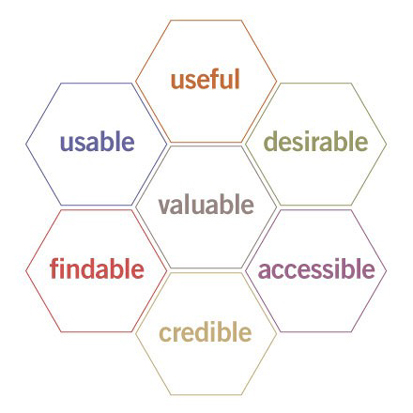
Video is an integral part of business, education, recreation, interaction and more.
Marketers must create online video marketing strategies that are thoughtful and deliberate, yet effective.
With me so far? Of course you are!
Where I may lose you? Accessible video.
We know how frustrating it is to encounter errors or not be able to access site content, and yet most of us don’t think online accessibility is necessary.
That would be a mistake – not only are companies losing out on an additional market, but they also forgo a better user interface and increased search engine optimization (SEO). Furthermore, accessibility practices reduce legal risks but demonstrate keen corporate social responsibility.
Keep reading to understand why your brand could benefit from accessible video.
What Every Marketer Needs to Know about UX
User experience (UX) is described as a person’s emotions when using a particular product, system or service. Sometimes “overall enjoyment” will be subbed in for emotions. But that last time you were frustrated with a product experience, you didn’t feel a smidge of enjoyment, you felt angry.
Yup. Emotion.
With face-to-face interaction less necessary (and in some cases, downright impossible, whether it’s distance or pandemic disease), a positive online user experience is vital. For online-only businesses, a user’s perception of the site is very important, with its utility and ease-of-use being the most essential.
User experience is very much a relationship between the customer and the brand. It’s always changing due to circumstance and innovation, yet marketers know a bad user experience can be hard to shake.
Peter Moreville of Semantic Studios’s user experience hexagon (below) is a brilliant representation of the numerous components necessary when designing a site visitor’s experience.

It’s obvious user experience isn’t just for website designers and information architects anymore – “content experience” is an emerging field, with these types of positions rounding out our teams.
Marketers craft content around the buyer’s journey; adding product videos, blog articles and whitepapers to every perceivable access point.
Furthermore, video marketers evaluate the desirability, usefulness, and value of ideas before they make it to video production.
We do these things because we want to ensure discoverability and sharability – essentially, overall engagement.
But do we always evaluate accessibility? No. This is the missing element in many a video marketers’ strategy. Think about how frustrating this must be for members of our community who need assistive devices to consume our content.
Why Video, SEO, and Accessibility Go Together
At this point, you may be wondering what all this has to do with SEO. What you may not realize is that many accessibility best practices also make content digestible by search engines, increasing their capacity to index and rank your content.
So what is Web accessibility? Web Accessibility is the practice of creating websites that are usable by people of all abilities. Roughly 20 percent of Americans have a disability that impairs access to websites and Internet content.
Interestingly enough, designing for assistive technology is a lot like designing for Web bots. For example, alternative text for images and multimedia available to search engines can also be understood by a blind person utilizing a screen reader.
Headers which are given more weight by search engines are again, also understood by a blind person to be a point of emphasis. As we discussed in a previous guest blog article, How Transcripts Boost Video SEO, transcripts are the text translation of your spoken content. Transcripts allow video content to be accessed by deaf users but search engines as well.
We add multimedia to sites to enhance the online experience, often not realizing that a multisensory approach done incorrectly actually keeps users out. This is because even with assistive technology, disabled users hit roadblocks due to poor design or technical incompatibilities. A lack of care can negatively impact SEO and bounce back rates when users aren’t patient enough to wait for long loading times or work around an interface problem. This is why user-centered design is so important.
2 Easy Ways to Make Videos Accessible
Google seeks to classify and arrange the Web’s abundant amounts of information, ideally in a way that makes it universally accessible and useful. Wanting to allow access to information in multiple formats, Google ranks videos with captions and transcripts higher in search engine results. Captions vastly improve your “findability” and accessibility. In recognizing the importance of user diversity and different user requirements, how can you make your videos more accessible on the Web?
What is the Difference between Captions and Transcripts?
When Should You Use Captions? Transcripts?
- Captions: Captions are time-synchronized text that can be read while watching a video. Captions assume that the viewer is completely deaf and include all spoken content as well as non-speech elements, such as sound effects and speaker identification.
- Transcripts: Transcripts are an important part of video and audio accessibility because they provide a textual version of the content that can be accessed by anyone. Transcripts are valuable to both deaf and blind users. Deaf users can read the transcript, while blind users can digest a transcript with a refreshable braille reader or screen reader.
For online video, both captions and a text transcript should be provided.
For content that is audio-only, a transcript is sufficient.
For better or worse, time-on-site can be a very important site metric. Studies show that transcripts increase engagement and that captions increase the completion rate of a video from 40 percent to 80 percent. If you want to make sure your audience is getting the message, add a transcript.
The Benefits of Accessible Video
- Greater visibility via search
- More site use and easier usability
- Better mobile responsiveness and site speed
- Larger market share
- Increased customer loyalty
- Reduced legal costs
- Greater protection from negative image or backlash
Learn more about the business case for accessible videos in corporations.
A solid video SEO strategy plans, creates, delivers and amplifies great content.
Some video marketers are starting to realize the link between video captions and SEO, but many don’t understand how video accessibility plays a vital part in the user experience.
Google’s repeated message is that quality content and an excellent user experience are crucial to SEO.
After all, there are people on the other end of these screens! Don’t let your video become impersonal; optimize video for the enjoyment of all.
A version of this post appeared on the Brightcove Video Marketing Blog, September 13th, 2013. It was edited for clarity, brand impartiality, and relevance and republished April 1st, 2020. Enjoy!




